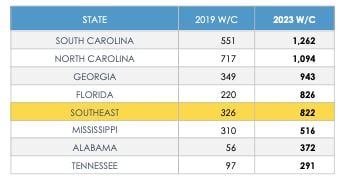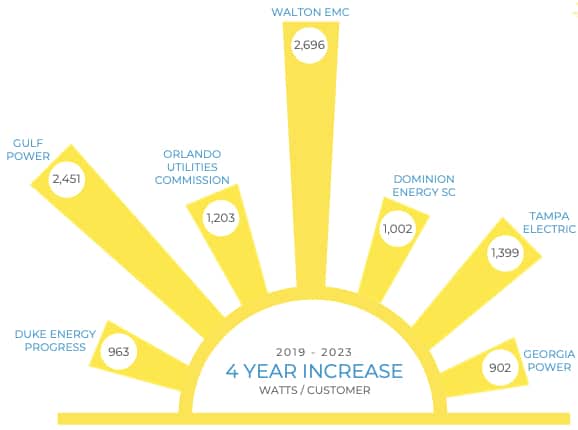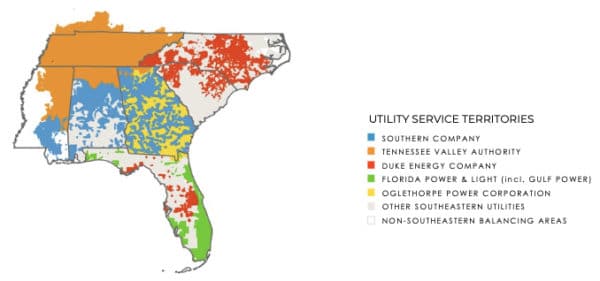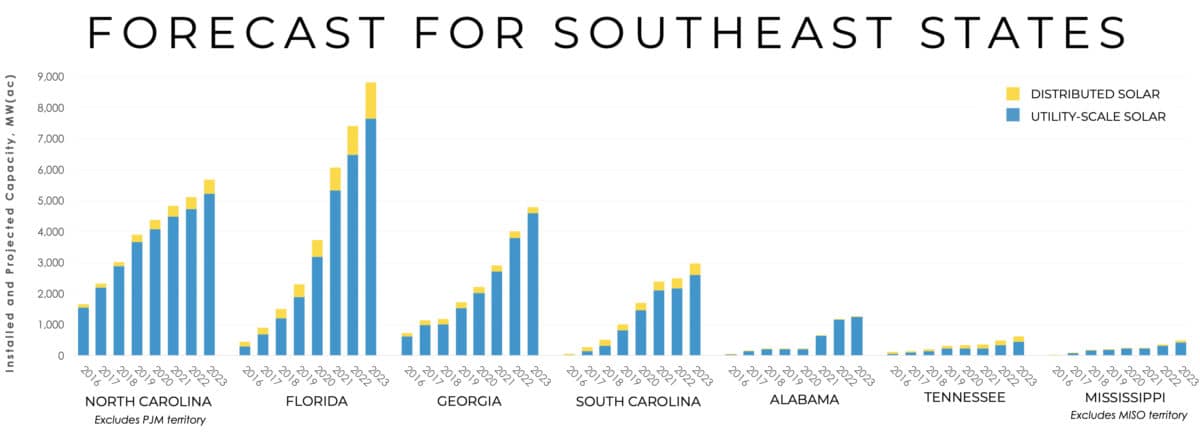The Southeast will reach nearly 25 GW of solar by 2023, up from about 10 GW now, says a report from the Southern Alliance for Clean Energy (SACE). By 2023, solar will reach 5% of total generation across the region, said the report’s author Bryan Jacob in a webinar.
Modest growth is projected for distributed solar capacity, shown in yellow in the image above. SACE made its projections based on publicly available reports and proprietary forecasts.

South Carolina leads in projected solar per customer for 2023, as shown at right, largely because the Energy Freedom Act, passed last year, will “sustain all segments of the vibrant solar market in the state.”
North Carolina, in second place, remains the only state in the Southeast with a renewable portfolio standard. “Interconnection delays are constraining the near-term North Carolina forecast (reduced from prior years),” says the report.
In third-ranking Georgia, the Public Service Commission “reinforced its legacy of solar leadership by more than doubling the amount of solar in the Georgia Power 2019 integrated resource plan.”
In Florida, Florida Power & Light won kudos for its state-approved plan to install 1.49 GW of solar through its SolarTogether community solar program, which will “double the amount of community solar” in the U.S.

SACE named seven utilities as Sunrisers, for their planned increase in solar capacity per customer, as shown at right. The length of each sun ray reflects the utility’s planned solar growth through 2023.
Three utilities are tagged as Sunblockers: TVA, Seminole Electric, and the North Carolina Electric Cooperatives. For each, the utility’s “solar ambition”—the projected solar watts per customer for 2023—“remains far below” the 2019 regional average of 325 watts per customer.
TVA continues to set policies unfavorable to solar, such as sunsetting the “once exemplary” Green Power Provider program. TVA, a “self-regulated monopoly, not subject to federal or state regulatory oversight,” says the report, “has been promoting misleading claims of solar growth.”
“SunBlockers should look to the SunRisers for how to increase installed solar capacity in their service territories and states,” said Jacob, who serves as solar program director for SACE.

The report defines “Southeast” as shown in the map at right. The report includes a summary description for solar capacity and solar policy in each state covered.
The SACE report is titled “Solar in the Southeast.” Data are reported in MW-ac, as “AC reporting is becoming increasingly more common, particularly for utility-scale solar projects.”
This content is protected by copyright and may not be reused. If you want to cooperate with us and would like to reuse some of our content, please contact: editors@pv-magazine.com.








By submitting this form you agree to pv magazine using your data for the purposes of publishing your comment.
Your personal data will only be disclosed or otherwise transmitted to third parties for the purposes of spam filtering or if this is necessary for technical maintenance of the website. Any other transfer to third parties will not take place unless this is justified on the basis of applicable data protection regulations or if pv magazine is legally obliged to do so.
You may revoke this consent at any time with effect for the future, in which case your personal data will be deleted immediately. Otherwise, your data will be deleted if pv magazine has processed your request or the purpose of data storage is fulfilled.
Further information on data privacy can be found in our Data Protection Policy.